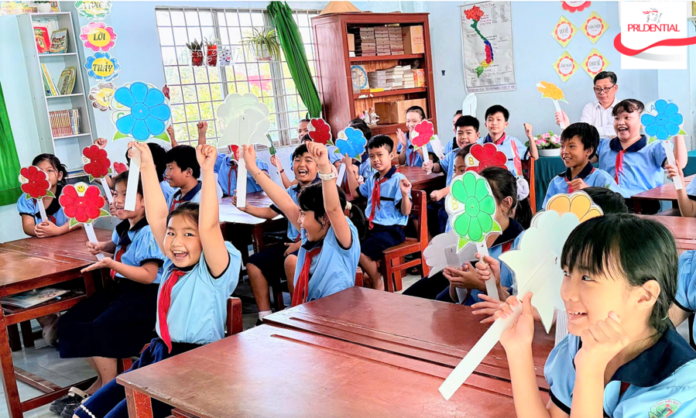Financial education is increasingly becoming an integral part of curricula in many countries. For instance, Germany is considering a policy that allows children as young as six years old to start saving for their retirement, fostering financial awareness from an early age.
The reasons for the growing importance of financial education at the primary school level, as analyzed above, are not merely theoretical. In Vietnam, this is evident through the strong momentum of financial education activities designed for children. A notable example is the 2018 General Education Program of Vietnam, which integrates financial education content into various subjects from grades 1 to 12. This program aims to instill good financial habits and decision-making skills in students’ daily lives.
Within the financial industry, several financial education initiatives for children have been launched and well-received by both parents and students. One exemplary program is “Cha-Ching,” a financial education initiative for children developed through a collaboration between the Prudence Foundation (under Prudential), Cartoon Network Asia, and Dr. Alice Wilder, an Emmy Award-winning children’s education expert.
After six years of persistent implementation in Vietnam, the “Cha-Ching” program has equipped 170,000 students and 5,300 teachers with financial knowledge. To date, Cha-Ching has reached 490 primary schools in 9 provinces and cities nationwide: Hoa Binh, Hanoi, Quang Ninh, Quang Tri, Quang Binh, Ha Tinh, Dong Nai, Dong Thap, and Ho Chi Minh City. Through this program, students have been introduced to basic yet practical financial concepts: Earning – Saving – Spending – Donating.
A notable highlight in the Cha-Ching journey is the annual “Money Whiz Kid” competition, which has been growing in scale each year. Notably, this year witnessed a record-breaking participation of 25,000 students from 295 primary schools, including students from outside the program’s implementation network. This attests to the strong appeal of financial knowledge among students.

After three months of intense competition across three online rounds, 47 financial management initiatives were conceived and implemented by the students themselves, with 8 outstanding projects making it to the finals. These projects exhibited high applicability, tangible revenue outcomes, and a strong sense of community – ranging from fundraising to donate books to underprivileged students to small business models promoting savings and sharing habits.

In addition to accompanying students on their financial learning journey, the Cha-Ching program also targets parents – those who play a foundational role in instilling financial habits in their children. On May 24, 2025, a workshop titled “Teaching Children about Finance with Cha-Ching” was held at Ban Mai Primary School in Hanoi.
The event witnessed active participation from parents, with vibrant discussions revolving around three main themes: engaging children in financial topics, principles of financial education within the family, and effective ways to communicate money management skills between parents and children. The workshop not only served as a platform for sharing but also offered practical hands-on sessions, providing parents with concrete tools to apply at home.

“Through the Cha-Ching program, I realized that earning money is not easy, and everything around me has a price,” shared Le Dinh Nhan Sam, a student from Vinh Tuy Primary School in Hanoi. “While working with my friends on the financial management initiative, I felt more empathetic towards my parents’ hard work. I also learned that earning money involves not just coming up with a business idea but also meticulous planning, listening to customer feedback for improvement, and excellent teamwork.”
















